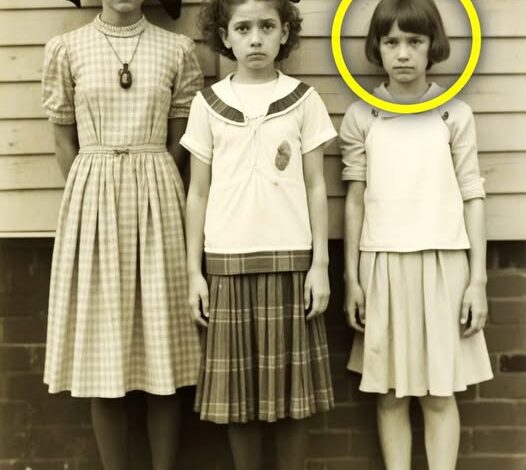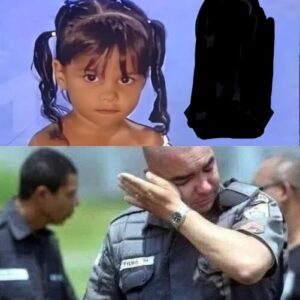
In 1912, three young women stepped outside the deafening clatter of the Porte Mill in Gastonia, North Carolina, to pose for a quick photograph. None of them realized that a hundred years later, their image would become the center of a startling discovery.
Inside the mill, the air was thick with cotton lint. The constant hum of machines was enough to rattle the bones. Nine-year-old Pearl Turner, not yet ten, had already worked there three years. Her small hands were nimble, perfect for the dangerous, precise movements the spinning machines demanded. Her fourteen-year-old sister, Viola, looked worn down by endless shifts, her eyes shadowed by fatigue. Their neighbor Penelope, twelve, had joined them outside for the photograph.
“Hurry, Pearly,” Viola urged, glancing nervously toward the mill. “Mr. Himmel said we can’t be gone long.”
“I’m coming,” Pearl replied, coughing softly as they stepped into the rare taste of fresh air.
The photographer, Thomas Himmel, arranged the girls in front of the mill’s accounting office. Pearl stood to the left, her dark eyes somber, carrying a maturity far beyond her years. Viola stood on the right, her posture rigid but tired. Penelope took her place between them. Himmel ducked under the black cloth of his camera, gave his instructions, and with a flash, their faces were preserved forever.
The three of them returned to the suffocating noise, unaware that this single image would outlast their lives, and a century later, rewrite part of history.
In 2025, Professor Sonia Abernathy adjusted her glasses as her assistant Marcus burst into her office, manila folder in hand, his face lit with excitement.
“What have you found?” she asked, curiosity breaking through her usual reserve.
“It’s from the Thomas Himmel collection we’ve been digitizing,” Marcus explained, sliding the photograph across her desk. “Three Mill Girls in Gastonia, 1912. Look here—the girl on the left. That’s Pearl Turner. Himmel noted she wasn’t even ten yet, already working three years in the mill.”
Sonia studied the small figure of Pearl, her expression steady despite her age. “We’ve seen plenty of Himmel’s child labor photographs,” she said.
Marcus leaned forward. “Yes, but I found her obituary. She lived until 1964. That’s rare. Mill children usually didn’t live long, especially ones who started so young.” He flipped to another page. “We even have interviews with her children from 2006 and 2007.”
Now Sonia was listening closely. The endurance of one child laborer through such brutal conditions was unusual enough, but Marcus’s excitement hinted at more.
Can we use facial recognition on this?” Marcus asked eagerly. “If we enhance the photograph, we might uncover details we’ve overlooked.” He handed her a draft request. “I only need your approval.”
Sonia hesitated. Normally she didn’t indulge Marcus’s over-enthusiasm, but something about this case was different. She gave a short nod.
Three weeks later, Sonia sat at her desk staring at her computer screen. The enhanced image of the three mill girls glowed on the monitor. At first, the digitization revealed nothing unusual, and Marcus spent days poring over archives, journals, and family records. Their focus shifted from Penelope—who had virtually no recorded history—to Pearl, the youngest and most resilient of the trio.
Sonia zoomed in on Pearl’s face again and again, comparing it with medical journals and other historic photos. After two long days, the system flagged something. A detail no one had noticed in over a century.
Her breath caught. “This changes everything,” she whispered, reaching for her phone. “Get me Dr. Harold from medical history.”
That evening, a lecture hall filled with professors and historians. Sonia stood at the podium, the enlarged photograph of the three girls projected behind her.
“Ladies and gentlemen,” she began, “you are looking at one of the most significant historical medical findings of our decade. This photograph, taken in 1912, shows three child laborers of the Porte Mill in Gastonia. For decades, we have known the conditions they endured—long hours, low wages, and most critically, the inhalation of cotton lint that destroyed lungs and shortened lives.”
She clicked to the next slide. The image zoomed in on Pearl’s face. Enhanced digital scans revealed faint but unmistakable traces of scarring around her lips and nose, consistent with chronic respiratory illness. But the scans also highlighted something shocking—subtle irregularities in her bone structure, early indicators of a rare genetic resilience to the very diseases that killed thousands of mill workers.
Pearl Turner should not have survived into adulthood, much less lived until 1964,” Sonia explained. “Most children exposed to this environment developed byssinosis—brown lung disease—and died before thirty. But Pearl’s physiology, which we now see evidence of in this enhanced image, suggests she carried a rare protective trait. What you see here may be the first photographic evidence of genetic resistance to industrial respiratory illness.”
Gasps rippled through the room. Historians shifted in their seats. For years, the narrative of mill children was one of tragedy. Now, in the face of this photograph, there was proof of survival—proof that even in the bleakest environments, anomalies of resilience existed.
Marcus, seated in the front row, couldn’t stop smiling. For him, this was not just a discovery about Pearl Turner. It was a bridge between the stories of forgotten children and modern science.
After the lecture, journalists clamored for interviews. Headlines soon followed: “Photo Reveals Genetic Secret of Mill Child Survivor” and “1912 Portrait Unveils Century-Old Medical Mystery.” The world looked again at the photograph, not just as a grim reminder of child labor, but as a rare testament to survival against impossible odds.
Pearl’s children, interviewed decades earlier, had described their mother as strong, sharp, and stubbornly healthy despite her harsh beginnings. One son had recalled, “She always said the mill tried to take her breath, but she wouldn’t give it up.”
For Sonia, the discovery was more than medical history. It was a reminder of how much was hidden in plain sight. A photograph taken casually outside a mill in 1912, meant to document exploitation, now revealed resilience encoded in the very bones of a child
Pearl Turner was not just another face among thousands of exploited children. She was proof that even in the bleakest of times, survival was possible—not by chance, but by something deep within her biology that science was only now beginning to understand.
Viola and Penelope’s stories faded, as most child laborers’ did. But Pearl’s face, staring solemnly from the past, carried forward into the twenty-first century with a voice louder than ever.
Sonia closed the file one evening and sat in silence. She thought of Pearl at nine years old, straightening her back for a photographer, never imagining her image would outlive her by more than a hundred years. She thought of the lint-filled air, the machines, the coughs that ended so many young lives.
And she thought of the word Marcus had used when he first brought the photo to her office: extraordinary.
He had been right.
Pearl Turner’s photograph had captured more than a moment. It had captured the proof of resilience hidden inside a child’s fragile frame—a resilience that defied history, defied medicine, and reminded the world that sometimes, survival itself is the greatest story of all.





